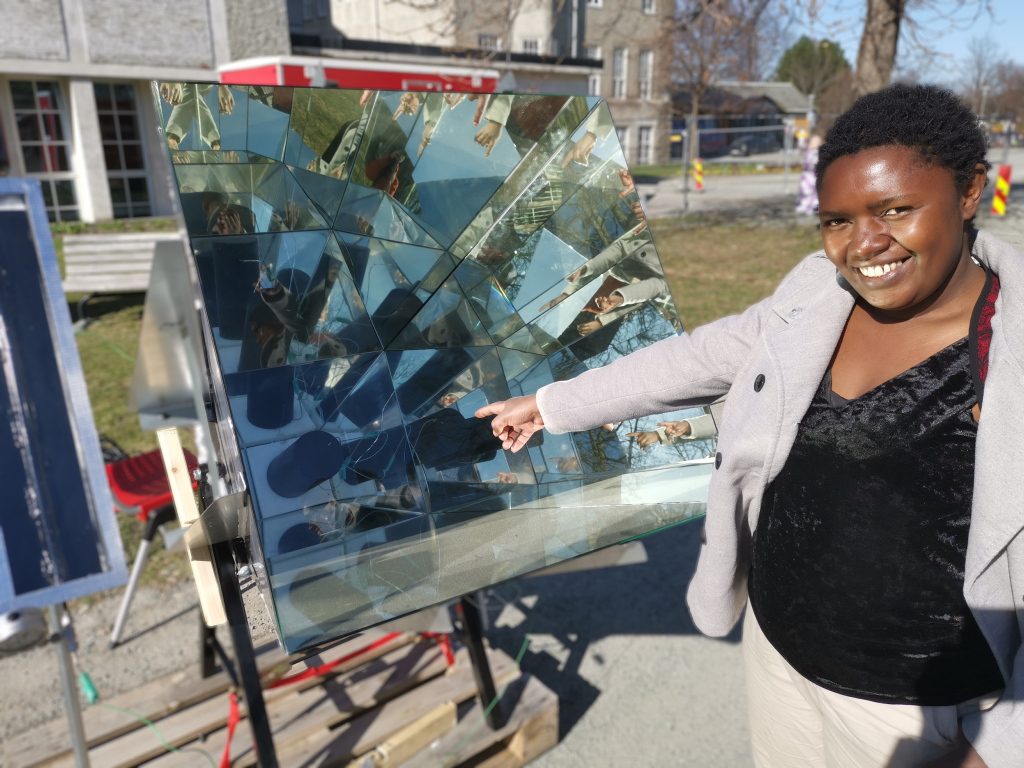My name is Casiana Blasius Lwiwa, and I started my PhD period at NTNU in 2019. The research project I work with will help to develop simple and cost-effective solutions for concentrating solar radiations and convert into heat for cooking.
This is particular significant in Tanzania, where the system will also be implemented as the sun is available almost all months in a year. The developed system can replace the use of wood, charcoal, and LPG, which are mainly used for cooking in Tanzania.
A solar parabola that is cost-effective
My research focus on the designing, building and testing the simplified 3D Compound Parabolic Concentrator (CPC) to capture and focus solar radiations onto an absorber, for conversion of radiation to heat. The designed CPC is cost-effective as it does not need solar tracking.
Moreover, as a 3D CPC with reflecting surface is not trivial to construct, the surface has been strongly simplified by using two sets of 4 flat mirrors in a squared channel arrangement.
Saving up heat for cooking during off-sun hours
The designed CPC can provide high temperature heat for cooking and frying and the thermal energy can be available at off-sun hours (heat storage is included in the system). As the majority of households, particular in Tanzania use smoke-producing cooking fuels, about 97% of households on average, 67% of rural and 30% of urban households, are exposed to high levels of smoke produced by indoor cooking.
This technology can be an alternative solution to reduce the extensive use of smoke producing fuels to minimize the dependence on forests for traditional charcoal that affects the environment. Besides, with the rise of the price of Liquefied Petroleum Gas (LPG), solar energy can be an alternative cooking energy.

We expect temperature above 200 degrees Celsius in the absorber
My research includes both numerical simulations and experimental work. Simulation results have provided the promising results, as the interception ratios (the ratio of rays entering the CPC opening to rays terminating on the cylindrical absorber) were more than 80%. The cylindrical absorber is made of steel and has 20 cm diameter and 30 cm long.
As for now, a series of tests to determine the maximum temperature on absorber for which the CPC can reach is ongoing. The maximum temperature reached so far is 173 degrees C, despite the challenges with weather. We expect to get temperature above 200 degrees C on absorber, which can be used for cooking.


